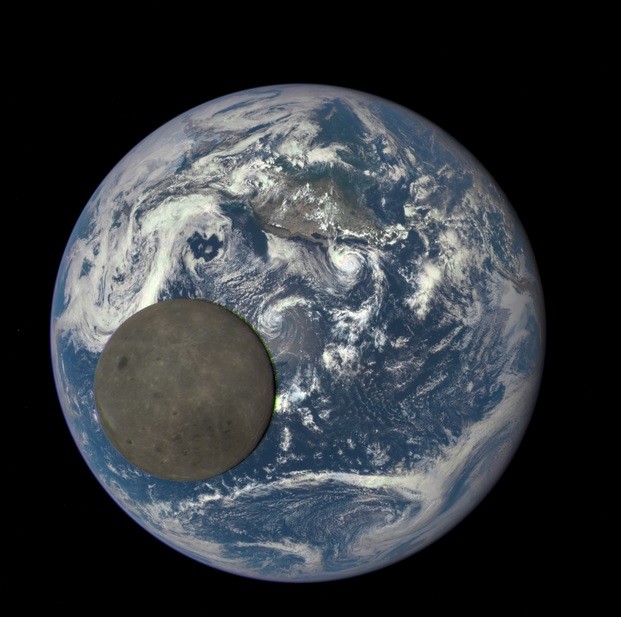A NASA satellite captured the dark side of the moon in this rare, never before seen view of the natural satellite with the entire planet Earth as its background, as its mysterious side has been revealed, fully illuminated on this remarkable animation.
This new series of images was taken by the camera of NASA's Deep Space Climate Observatory which shows the far side of the moon as it moves in front of Earth's side, where the sun is shining on it. The images were captured on July 16 as it presents the moon moving in front of Earth over the Pacific ocean towards North America.
Details of the far side of the moon are now unveiled as sunlight strikes, such as a crater and this large lunar plain called the Mare Moscoviense. From Earth, the moon only shows its one side as it is tidally locked to the planet which means that its orbital duration is also exactly the same to the time needed to complete one rotation on its axis.
The first views of the far side of the moon was captured by a Soviet lunar mission in 1959 where NASA scientists will now record and take images of it twice a year from NASA's observatory that also aims to monitor solar winds.
According to Adam Szabo from NASA's Goddard Space Flight Center, it's truly surprising to see how much brighter the Earth actually is than the moon, and this makes our planet a truly brilliant object in deep space when compared to the surface of the moon.
On the other hand, according to astronomer Michael Brown from Monash University, Melbourne, these new images of the far side of the moon are captivating. He adds that what's unique to these photos is that a spacecraft went beyond the moon to capture this view which is around 1 million miles away from Earth, making this a spectacular perspective.
He explains further that this mission helped to obtain this type of view, a sweet spot where the moon is directly seen on a sunlit Earth where it is also lit by the sun, showing a truly different view compared to what we are used seeing from Earth.
The satellite images of the far side of the moon were obtained when the DSCOVR spacecraft's EPIC camera (Earth Polychromatic Imaging Camera) and telescope crossed Earth some 1.6 million kilometers away.



























